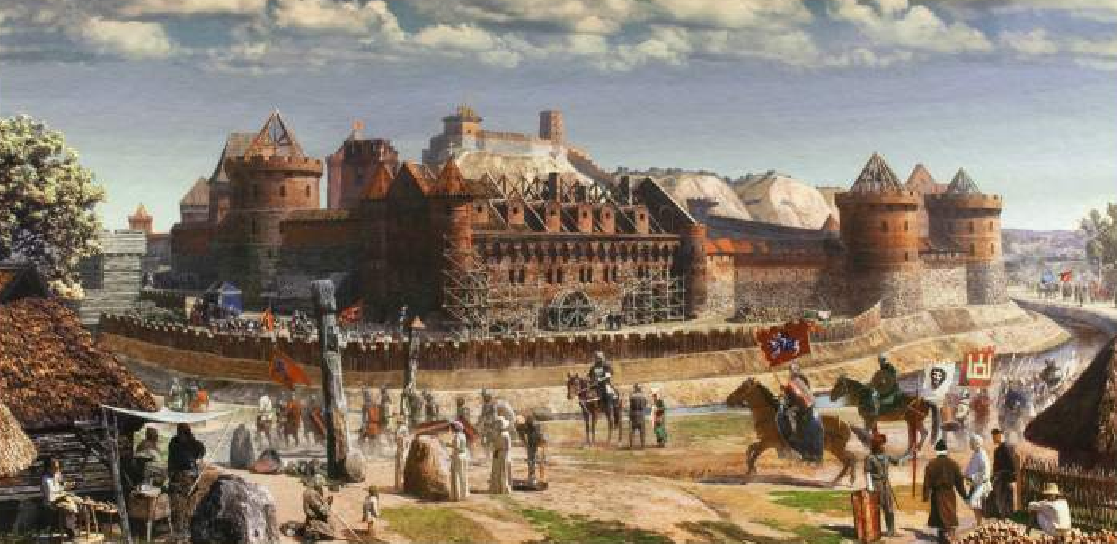Bishop’s House
While walking in Cathedral Square, you can find the patterns of reddish granite slabs. It is not a modern piece of art but it marks the location of the former defensive wall and the bishop’s house. The foundations of the palace have been preserved; thus, when walking on the red line of the pavement you are, in fact, walking along the paths of history. In 1387, Jogaila donated one masonry and four wooden buildings found on the territory of Vilnius Castle to Vilnius’ Bishop Andrius.
What were the requirements for becoming a bishop? Implicit faith was not enough. When electing a bishop, the candidate’s education and organisational skills were taken into consideration as well as how the person performed activities aimed at spreading the awareness of Christianity. Besides, from the start of the 16th century, it was important to make sure that a representative of a noble and influential family would occupy the throne of the bishop.
It is thought that Vilnius’ bishopric was the biggest in Europe. Bishops took care not only of people’s faith – as a result of their activities we can take pleasure in visiting Vilnius Cathedral and many other churches in the city, the construction and welfare of which were supervised by bishops. Rulers, noblemen and bishops donated expensive liturgical articles to the Cathedral, part of which are preserved and can be found in the exposition of the Ecclesiastical Heritage Museum today.

